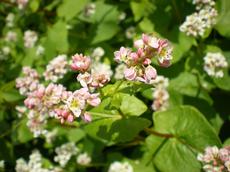Seminar papers available on Wikipedia
Wikipedia is controversial because the accuracy of the facts is not necessarily verified by experts – with the result that teachers often ban quotes from Wikipedia. ETH-Zurich professor Achim Walter, however, has now turned the tables: his students don’t get their info from Wikipedia; they write their own entries.

Students at the Department of Agricultural and Food Sciences have been anything but bored this year. Instead of listening to the usual lectures, the participants in the Master course “Alternative Crops” had to write a Wikipedia entry. In doing so, the budding crop and agriculture scientists are not just making what they’ve learned accessible to their classmates, but also to all Wikipedia users.
Alternatives to main crops
Alternative crops are plants that are cultivated to a lesser extent than main crop types like maize, wheat and rice, which cover over fifty percent of the global calorie consumption. Thousands of crops are grown all over the world, but only a few dozen of them are cultivated on a large scale. Hundreds of them have great potential, however. “It’s worth raising the awareness of the cultivation of these plants,” says Achim Walter, a professor at the Institute of Agricultural Sciences and initiator of the unusual seminar.
One of the crops to have become rare in Europe is buckwheat. “Buckwheat could compete with the dominant crop species of today,” Walter is convinced. In Switzerland, buckwheat is mainly used as the basic component of the traditional pizzocheri pasta from the Poschiavo valley. However, the speciality is no longer made from locally produced buckwheat. In fact, it is barely grown these days and puschlaver pasta manufacturers have to resort to buckwheat from the surroundings of Zurich or from abroad.
Forgotten food producers
But it’s not just in the mountain valleys of Graubünden that erstwhile knowledge is dormant and genetic resources lying idle, but also in Africa and the mountain regions of South America. According to Walter, the world’s food system needs to make the most of this capital in future if it wants to guarantee a food supply for the growing population. Centuries ago, the potato came to Europe from the mountain regions of the Andes and became a staple food in Europe, long before taking the world by storm in the form of chips, crisps and hash browns. However, the Incas cultivated many more tuber vegetables, such as the oca (http://en.wikipedia.org/wiki/Oca) or ulluco (http://en.wikipedia.org/wiki/Talk:Ulluco). “They have similarly fantastic properties,” swoons Walter. But he stresses that they are even fading further and further into obscurity among the local population.
There’s no end to the variety of fruits, spices and medicinal plants that are classed as alternative crops. For instance, the students described the potential of the South African plum Carissa macrocarpa for the first time and wrote an article on tamarillos, which can already be found in some shops over here. “This vitamin-packed fruit could also be grown in this country, which means many of the colourful specimens in the fruit sections of our supermarkets wouldn’t have to travel half way round the world anymore,” says Walter.
Conserving knowledge
There are scientific studies on many alternative crops that are not available to everyone – such as in Africa or South America. “Often, the specialist articles are already very old and only available in print, not electronic form,” says Walter. If the plants are not cultivated for a long time, our knowledge of them is gradually lost. Consequently, Wikipedia is a good portal for plant researchers to conserve knowledge. Walter sees it as a source of motivation to tackle such themes and develop them in a contemporary form. “Publishing on Wikipedia has a lasting value. It appeals to many young people who don’t just want to achieve something in the virtual world.”
The fourteen students’ assignment was to describe a forgotten or even unknown crop by compiling information on the origin, climate demands, cultivation, biology and use of the plant they had chosen.
About two-thirds of the way through the course, Walter carried out a progress check for the projects with his students. Two were disappointed to discover that the Wikipedia entries that had originally existed had been adapted and reworked to such an extent that they couldn’t really add anything new anymore. In the general discussion on the reliability of Wikipedia, however, this also showed the students how dynamically and reliably Wikipedia’s database is developing.
All of the students’ entries were proofread and corrected in pairs, then by Achim Walter and, if necessary, revised. They were then uploaded onto the English-language Wikipedia (see links for the crops mentioned) with the help of the e-learning expert Urs Brändle and Walter’s senior assistant Andreas Hund.
Scientifically founded
Apart from the odd spelling correction, there has hardly been any negative feedback so far. One article was deleted by a Wikipedia administrator for a breach of Wikipedia etiquette: the student had all too hastily deleted an existing, poorly structured entry and replaced it with her own. Had she improved the structure and content of the existing article bit by bit and thus given its unknown authors the chance to interact, the rules would not have been broken. This, too, was an educational and ultimately confidence-building experience for the whole class in using Wikipedia, stresses Walter.
With the Wikipedia work in his module, Achim Walter has simultaneously created something useful for the public, roused enthusiasm for his subject and taught the students the rules, opportunities and risks involved in using Wikipedia. The scientist is convinced that, with their entries, the students are helping to salvage knowledge of forgotten plants for the Internet age and highlight surprising options for our future nutrition.
- 25.07.11: Wikipedia: Selber aktiv werden
- 25.07.11: Wikipedia: Room for basic improvement







READER COMMENTS